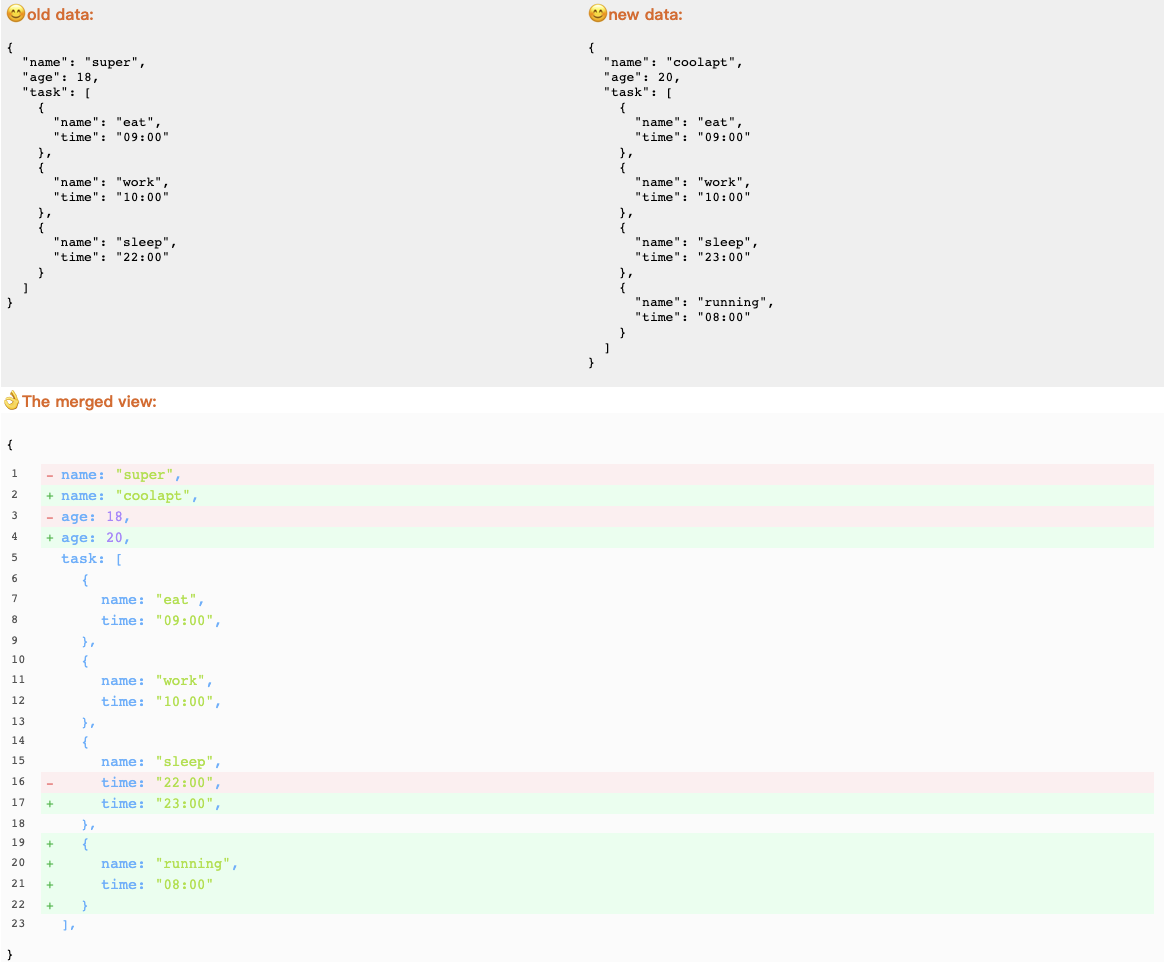

(Like ITWhisperer notes, comparing two indefinite sets can deplete resources very quickly.) Is it another list of name-value pair? Or is it a scalar value list? In both cases, I am assuming that the "another object" is a fixed object, not another indefinite set like "similar json objects" that your search returns. In essence, you need to specify what this "another object" looks like. So I'd like to throw out some assumptions to help clarify the question. This said, I often find myself in the same struggle to untangle my own "requirements". There is a second clarification that is needed: what operation do you have in mind to "compare the 'somelist' part of every object to another object." If you are unclear what the end result look like, any given solution could either backfire or not scratch the itch, so to speak. However, if the value does not exist in the source document, the value will be considered to be in the target document, which allows to ignore add operations.ITWhisperer is correct. The option accepts a variadic list of JSON Pointers, which all individually represent a value in the source document. The fields must be identified using the JSON Pointer (RFC6901) string syntax. The Ignores() option allows to exclude one or more JSON fields/values from the generated diff. 🚧 This option is experimental and might be revised in the future.
#JSON COMPARE GENERATOR#
the elements of the first can be found in the second, the same number of times for eachįor such situations, you can use the Equivalent() option to instruct the diff generator to skip the generation of operations that would otherwise be added to the patch to represent the differences between the two arrays.However, they are equivalent in terms of content: The root arrays of each document are not equal because the values differ at each index. Factorization reduces the number of operations generated, which inevitably reduce the size of the patch once it is marshaled as JSON.įor instance, given the following document: To enable the factorization of value removals and additions as moves and copies, you should use the functional option Factorize(). Operations factorizationīy default, when computing the difference between two JSON documents, the package does not produce move or copy operations. Note that any combination of options can be used without issues. The third parameter is variadic and accept a list of functional opt-in options described below. If more control over the diff behaviour is required, use the CompareOpts or CompareJSONOpts function instead.


However, if the webhook is still using the v1.19.x version of the k8s.io/api/core/v1 package that define the Service type, instead of simply ignoring this field, a remove operation will be generated for it. spec.allocateLoadBalancerNodePort in Kubernetes 1.20 to disable allocating a node port for services with Type=LoadBalancer. If your webhook does not have the latest version of the client-go package, or whatever package that contains the types for the resource you're manipulating, all fields not known in that version will be deleted.įor example, if your webhook mutate Service resources, a user could set the field. There's also one other downside to the above example. You can find a detailed description of that problem and its resolution in this GitHub issue. Mutating the original pod object or a copy is up to you, as long as you use the raw bytes of the AdmissionReview object to generate the patch. req is a k8s.io/api/admission/v1.AdmissionRequest object jsondiff. Comparing between the unmarshaled and copied versions can generate add and change patches below a path not in the original JSON, and the API server will reject your patch.Ī realistic usage would be similar to the following snippet: These will exist when you unmarshal from JSON, because of how Go structs work, but are not in the original JSON. Optional fields being ones that are a struct type, but are not pointers to those structs. Below is a quote of the original comment: As pointed out by user /u/terinjokes on Reddit, due to the nature of Go structs, the "hydrated" corev1.Pod object may contain "optional fields", resulting in a patch that state added/changed values that the Kubernetes API server doesn't know about. Note that the above example is used for simplicity, but in a real-world admission controller, you should create the diff from the raw bytes of the field. The JSON patch can then be used in the response payload of you Kubernetes webhook. "path": "/spec/volumes/0/emptyDir/medium "


 0 kommentar(er)
0 kommentar(er)
